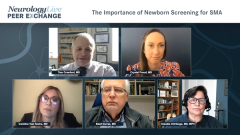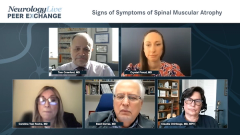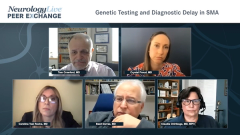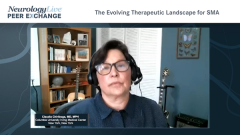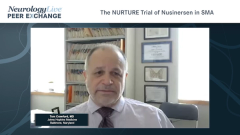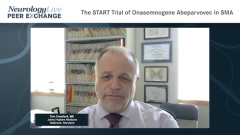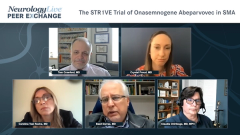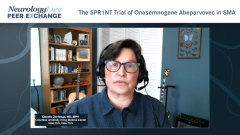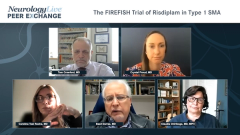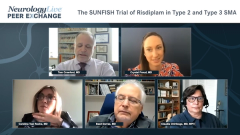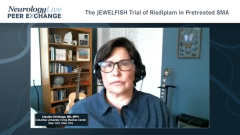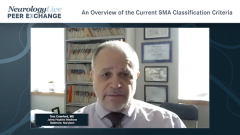
The JEWELFISH Trial of Risdiplam in Pretreated SMA
Key opinion leader in neurology Claudia Chiriboga, MD, MPH provides insight into response to risdiplam in patients with SMA who were not naïve to treatment as studied in the JEWELFISH clinical trial.
Episodes in this series

Crystal Proud, MD: I’d like to wrap this up by having Claudia briefly review the JEWELFISH data and the goals of that clinical trial.
Claudia Chiriboga, MD, MPH: JEWELFISH is an open-label study with non-naïve patients given risdiplam. The study aims to assess mostly PK [pharmacokinetics] and PD [pharmacodynamics] data to see if prior treatment affects the response of risdiplam. To date there are 174 patients enrolled. What researchers have found is that the [adverse] effect profile is very consistent with what was seen in the SUNFISH data. There are minor things related to the eyes; there are abdominal things, diarrhea, fever, and the like. No one stopped because of adverse effects. Most of the AEs [adverse events] were disease-related. Because risdiplam is a systemic medication, they are measuring SMN protein, and with that 1:1 penetrance into the central nervous system, it is thought to be a surrogate for what the brain is seeing.
What the researchers found is about a 2-fold increase in SMN protein level. The last presentation at the MDA [Muscular Dystrophy Association] conference was stratifying that by SMA [spinal muscular atrophy] type 1, versus 2, versus 3, and showing that the increase in the SMN protein was higher in those who had the lowest levels: patients with SMA type 1. The groups that have been looked at with prior treatment include patients from the MOONFISH trial, those treated with RG7800, which has more than 30 months of follow-up, and more recently, those treated with onasemnogene abeparvovec, which has less than 12 months of follow-up. There are no outcome efficacy data yet, but we hope to analyze that a year from now.
I think the other questions that were posed—you were talking about management and compliance—it is an oral medication, so patients can choose not to take it, but I have had the other situation: adolescents who are waiting to turn 18 years of age so they can stop the nusinersen and go to something that is not invasive. I think most patients with SMA are very driven and do want to take their medication. If they were to stop taking it, eventually they would start to see a decline in outcome. Clinically, there are not a whole lot of data on efficacy. Patients who have decided to go on to risdiplam have been because of ease of administration, mostly because of tolerability to the invasive nusinersen, for example. Others go off the drug because they perceive that there is less efficacy or a loss of efficacy. This is a perception on the parents’ part.
There is, I think, a difference regarding the evenness of the distribution of nusinersen. I had one patient who had achieved some strength in his arms; he could do his hook in his wheelchair when playing basketball. The patient was starting to have respiratory and swallowing problems that nusinersen was able to alleviate. It didn’t cause much change in motor strength, and he did not lose anything that he had gained with nusinersen. I think there is a distribution issue that is facilitated when you use a systemic medication.
Crystal Proud, MD: These are really exciting times where we are seeing a complete transformation of this space. Thank you for watching this NeurologyLive® Peer Exchange. If you enjoyed the content, please subscribe to our e-newsletters to receive upcoming Peer Exchanges and other great content right in your inbox.
Transcript Edited for Clarity
Newsletter
Keep your finger on the pulse of neurology—subscribe to NeurologyLive for expert interviews, new data, and breakthrough treatment updates.

